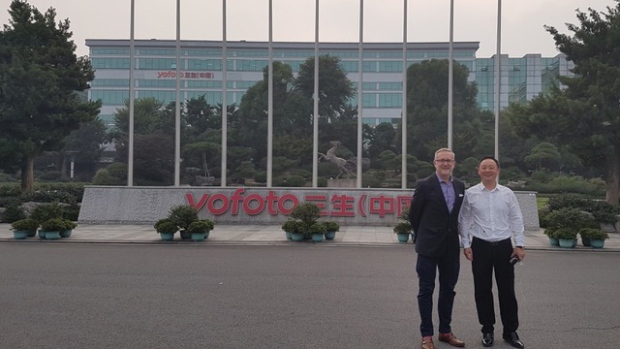Jan 24, 2018
From stem cells to revenue: Bringing regenerative medicine to the masses

RepliCel lands Asian partnership to optimize the development of its biotech solutions for chronic conditions
Over the past few decades there have been incredible medical breakthroughs in the field of Regenerative Medicine as researchers seek to use the body’s own cells to treat chronic conditions.
Regenerative Medicine or “RM” aims to harness the power of stem cells, biomaterials and molecules to repair, regenerate or replace dysfunctional cells, tissues and organs. It has the promise to treat, manage and perhaps cure some of the most devastating and costly conditions in the world today, reports Michael May, president and chief executive officer for the Centre for Commercialization of Regenerative Medicine (CCRM) in Toronto.
In essence, the biotech industry is seeking to leverage cells as a medical alternative to surgery, pills and chemicals.
While bone marrow transplants are the most widely used stem-cell therapy to-date, Canadian companies are developing innovative stem cell products to treat a host of conditions. RepliCel Life Sciences Inc. (TSX.V: RP) is developing cutting-edge technologies using stem cells harvested from hair follicles to treat tendon degeneration, skin aging, and pattern baldness.
For example, to treat chronically injured tendons, a patient’s collagen producing cells (fibroblasts) are isolated from a small biopsy taken from the back of the head, replicated and then injected directly into a damaged tendon to stimulate the stalled healing process. The same principle applies for using a patient’s collagen producing cells to rejuvenate aging and sun damaged skin.
Much of this regenerative medicine innovation is being led by academics and small companies. According to CCRM, many of these products in development will require partnerships with more mature companies to be successfully commercialized.
“It’s an exciting time to be developing cell therapies,” says Lee Buckler, Chief Executive Officer and Director of Vancouver-based RepliCel Life Sciences. “As we mature our product pipeline, we have increasing opportunity to secure partnerships to bring our developments to market.
“Our strategic analysis lead us to conclude Asia was the optimal place to focus our initial partnership initiatives. Upon the release of initial clinical data for our cell therapy pattern baldness product in 2013, we executed what is now a long-standing partnership with Japan-based skincare giant Shiseido for the development and marketing of that product in Asia.”
In 2017, RepliCel announced its first human clinical data from its skin rejuvenation and tendon regeneration cell therapy products. This allowed the company to focus its partnership initiatives on the explosively growing market for new biotech products in China, given the rapid growth of their middle class and their focus on health and wellbeing.
Recently, RepliCel announced a new partnership with YOFOTO, a mid-size Chinese health and wellness company keenly interested in tendon repair and skin rejuvenation. YOFOTO is the company’s second major deal in Asia — this one is focused strictly on Greater China.
“These partnerships,” Buckler continues, “not only allow us opportunity to commercialize products in Asia, but will also both generate human clinical data, which can be used as we develop our products worldwide, and assist us in capitalizing the company to fund those efforts.”
Japan and Korea remain particular on-going partnership target markets for RepliCel’s skin-rejuvenation cell therapy and dermal injector, not only because of the consumer demand for such products in both these markets, but because of the favourable commercialization environment both these markets represent for such products.
According to Douglas Loe, industry analyst for Echelon Wealth Partners, “We have long been encouraged by the potential for identifying cell therapy development partners in Japan where changes to the Pharmaceutical and Medical Device Act (PDMA) established the regulatory framework for how regenerative therapies could be tested and by which conditional market authorization could be expedited.”
Canada’s involvement in the development of regenerative medicine began with the discovery of stem cells in the 1960’s, which sparked the worldwide use of bone marrow transplants for patients with leukemia and aplastic anemia. This generated an incredible research machine that made important discoveries over the ensuing years. “We are at a similar junction today,” notes Michael May. “We’re leading the science and have begun to leverage commercialization around the globe.
“The system is primed; we now need to fuel it with private investment to ensure Canada is at the centre of this emerging industry. Canada imports close to 100 per cent of our medical treatments. It would be much more exciting to be exporting our treatments and using our healthcare system to develop and deliver those products to patients around the world, all while improving the health of Canadians here at home”.
“There are few publicly-traded entities through which to invest in regenerative medicine in Canada, at least so far, mostly because the paradigm is still fairly early in its development history. But among the most attractive to us technologically is BC-based, RepliCel Life Sciences,” notes industry analyst Douglas Loe.
“Well, every company’s strategy is different,” concludes RepliCel Life Sciences Inc.’s (TSXV: RP) Buckler, “but it is our corporate intention to build sufficient value in our assets, licenses, and royalty streams so that the company continues to contribute valuable assets to the growing appetite for regenerative medicine among the global multinational players.”
Continue watching this sector’s amalgamation between scientific innovation and commercial opportunity.